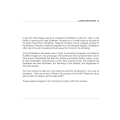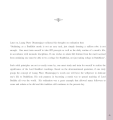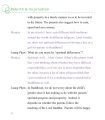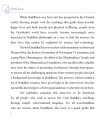Theravāda Buddhism : ค้นหาหนังสือธรรมะ หน้า 4 / 36
หน้าหนังสือทั้งหมด

49
International Buddhist Conference: Buddhism into the Year 2000
7-10 February 1989, the Dhammakaya Foundation hosted the International Buddhist Conference "Buddhism into the Year 2000" at Sukhothai Dhammadhiraj Open University with a thirty national and internatio
Between 7-10 February 1989, the Dhammakaya Foundation organized the International Buddhist Conference titled 'Buddhism into the Year 2000' at Sukhothai Dhammadhiraj Open University. This event feature

25
The Early Life of Luang Por Dhammajayo
Luang Por's STORY 21
Luang Por Dhammajayo was born Chaiyaboon Suddhipol on April 22, 1944, to the family of Janyong and Juree Suddhipol. He grew up in a small house on the bank of the Chao Praya Rive
Luang Por Dhammajayo, born Chaiyaboon Suddhipol on April 22, 1944, in Singburi, Thailand, had a keen interest in Buddhism from a young age. Raised by an engineer father, he frequently attended boardin

155
Digital Dictionary of Buddhism and Related Works
Muller, A. Charles, ed. “Digital Dictionary of Buddhism.” Digital Dictionary of Buddhism 電子佛教辭典, n.d. Accessed December 4, 2012.
—. “Yi 意, Mention.” Digital Dictionary of Buddhism, Nattier, Jan. 200
This compilation features key works in early Chinese Buddhism, including the Digital Dictionary of Buddhism edited by A. Charles Muller, and significant contributions from scholars such as Jan Nattier

573
Epigraphic and Scriptural Contributions to Buddhism
Sircar, D. C. 1959-60. "No. 46 - Footprint Slab Inscription From Nagarjunikonda." In D.C. Sircar, eds., _Epigraphia Indica xxxiii_, pp. 247-50. Delhi: Manager of Publications.
Skilling, Peter. 2010. "
This text discusses critical contributions to the study of Buddhism, particularly through epigraphic evidence and scriptural analysis. D.C. Sircar's work on Footprint Slab inscriptions from Nagarjunik

156
Expansion of Buddhism Worldwide through Luang Phaw Dhammajayo
With his kindness for Thai people in foreign countries and foreigners to be able to learn Buddhism and practise meditation, Luang Phaw Dhammajayo decided to choose suitable people, monks, upasaka and
Luang Phaw Dhammajayo has shown immense kindness towards the Thai community abroad and foreigners interested in Buddhism and meditation. By selecting suitable individuals with language skills, he faci

45
Reflections on Buddhist Ordination by Luang Phaw Dhammajayo
Later on, Luang Phaw Dhammajayo reflected his thoughts on ordination that:
“Ordaining as a Buddhist monk is not an easy task, just simply donning a saffron robe is not enough. One must train oneself t
Luang Phaw Dhammajayo reflects that ordaining as a monk requires more than just wearing the robe; it involves training to take on the 227 precepts and adhering to monk's disciplines. His commitment to

22
The Importance of Dhammakaya
THE IMPORTANCE OF DHAMMAKAYA
11. The Core of Buddhism
Dhammakaya...
is the core of Buddhism,
it being vital we study it
to the point
we can attain it for ourselves.
It was there at the beginning of Bu
Dhammakaya is central to Buddhism, emphasizing its essential role from the beginning. Despite neglect, its truth persists, allowing for personal verification through practice. Understanding Dhammakaya

120
Buddhism and the Understanding of Life
This question has prompted me to study Buddhism
seriously, which has given me an understanding of life:
1. Death is not the end. We still have to be reborn
indefinitely, as long as we have not rid our
The text reflects on serious studies of Buddhism and how its teachings on rebirth, karma, and consequences of actions shape a more meaningful life. It emphasizes the importance of performing good deed

20
Rebirth & Incarnation in Buddhism
Rebirth & Incarnation
Monica
with property in a timely manner so as to be invested
in the future. The parents also suggest how to earn,
spend and save money.
: In my travels I have seen different birt
In Buddhism, the gender of a child is not considered important for the spiritual progress of parents. Conversations highlight that responsibilities are not tied to the sex of the child, emphasizing th

4
Buddha Knows: A Journey into Buddhist Philosophy
Preface
While Buddhism was born and has prospered in the Oriental
world, blessing people with the teachings that guide them towards
happy lives and both mental and physical wellbeing, people from
the
In 'Buddha Knows', Monica Øien interviews Luang Phaw Dhammajayo, the abbot of the Dhammakaya Temple, as he addresses questions from the Western world about Buddhist philosophy. This book serves as a b

569
Academic Contributions to Buddhist Studies
University of Washington.
Lévi, Sylvain. 1932. Mahākarmavibhanga (La Grande Classification des Actes) et Karnavibhangapadéša (Discussion sur le Mahā Karmavibhānga). Paris: Librairie Ernest Leroux.
Luo
This text references several significant academic contributions to Buddhist studies. Sylvain Lévi's work on Mahākarmavibhanga highlights the classification of deeds in Buddhist philosophy. Luo and Hon

21
Exploring Buddhist Manuscripts and Teachings
JDIRI
Contents
The Most Venerable Phrathepyanmahami (Luang Phaw Dhammajayo)
*Homily* I
Garry W. Trompf
Emeritus Professor in the History of Ideas
This text presents a collection of scholarly articles on Buddhist manuscripts and teachings, focusing on contributions from various experts. It includes studies on the Tipitaka Manuscripts of the Kham

6
การใช้คำว่า "ฉัตร" ในพระพุทธศาสนา
คำว่า "ฉัตร" ในฉบับนี้พระพุทธศาสนาบางแห่ง
The Term Laddh in Theravāda Buddhist Scriptures 41
The attitude of using the term latthi in Thai which was developed from laddhi in Pāli shows that the usage
บทความนี้นำเสนอการศึกษาเกี่ยวกับการใช้คำว่า latthi ในภาษาไทย ซึ่งแสดงให้เห็นว่าอิทธิพลจาก Pāli Texts โดยเฉพาะในความเห็นต่าง ๆ ในพระไตรปิฎก โดยเนื้อหานี้เป็นส่วนหนึ่งของการนำเสนอผลงานวิจัยในงานสัมมนาวิ

20
Understanding Boon, Kilesa, and Mara in Theravada Buddhism
Suzanne Jeffrey
We start to talk about general stuff like the weather and his health and how Jon and I are enjoying the Wat experience. I decide to start the questions, believe it or not, and so I ha
In this excerpt, Suzanne Jeffrey shares her dialogue with a Theravada monk, discussing important Buddhist concepts such as boon, kilesa, and Mara. The monk provides insight into the 'Treasure Store Di

94
Buddhist Manuscript Formats in Dai Region
Volume 98 Khuddaka-nikāya (小阿含经) and Volume 99 Majjhima-nikāya (中阿含经) are all in 5-line to 6-line format manuscripts; Volume 100 Digha-nikāya (长阿含经) is in 4-line to 5-line-format. The jäṭaka Wexiandal
Volume 98 Khuddaka-nikāya and Volume 99 Majjhima-nikāya are primarily in 5-6 line formats, while Volume 100 Digha-nikāya is formatted with 4-5 lines per page. The jäṭaka Wexiandala represents a key Bu

72
Understanding the Levels of Dhammakāya and Noble Disciples
In regard to the different levels of dhammakāya, the canon talks about the different states of trainees (sekha) and non-trainees (asekha). The former refers to states in which a further course is yet
The text elaborates on the different levels of dhammakāya, categorizing trainees and non-trainees based on their qualities and practices. Trainees are seen as individuals who still have further course

36
References to 'Dhammakāya' in the Pāli Canon
III. References to 'Dhammakāya' in the Pāli Canon
In the Pali canon, the term dhammakāya appears four times: once in the Aggiāṇā-sutta of the Dīgha-nikāya and three more times in Apadāna literature.
In the Pāli Canon, the term 'dhammakāya' is found four times, significantly in the Aggiāṇā-sutta and Apadāna literature. It serves various roles including a designation for the Tathāgata and associati

25
The Ancient Wisdom of Dhammakaya
An Ancient Secret for the New Millennium
or "The Body of Truth". It is an ancient word which
appears in various versions of Buddhist scriptures
used by various Buddhist traditions, including
the Thera
The concept of Dhammakaya, meaning 'the Body of Truth,' has deep roots in Buddhist scriptures across various traditions, including Theravada, Mahayana, and Vajrayana. Despite its ancient origins, know

129
Exploring the Center of the Body in Meditation
Thus, the phrase 『息中具有四大。心在中』 can be interpreted as: "the mind should be located at the centre of the body while breathing (in and out)." The precise position of the centre of the body where the mind
This text examines the phrase 'the mind should be located at the center of the body while breathing in and out.' It references the teachings of PhraMongkolthepmuni regarding the center's location abov

69
พระพุทธศาสนาและสถานภาพสตรี
…"ครุวรรณ 8").” Yihui 3: 41-59.
SUCHARITTHAMMAKUL, Wilaiporn(燕点贝).
2008 “On Gender Discourse in Theravāda Buddhism: From the Interpretation of Original Buddhist Texts to the Contemporary Meaning on Equality.” Colle…
เอกสารนี้สำรวจเรื่องสถานภาพและบทบาทของสตรีในพระพุทธศาสนา โดยนำเสนอผลวิจัยและเอกสารสำคัญ ใน บทความที่ได้รวมรวมจากแหล่งต่างๆ เช่น งานเขียนของนักวิจัยชื่อดัง เช่น SHI Hengqin, SHI Shengyan, และ Wilaiporn
